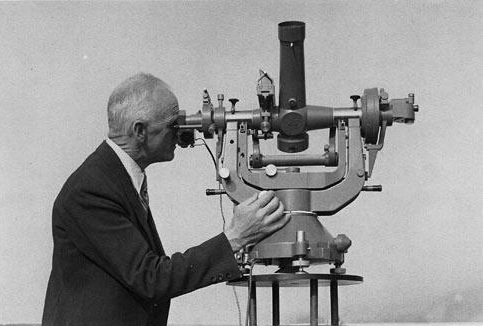Welcome to another round of Tutorial Tuesday, folks!
This week, I wanted to give a brief overview of the many factors that go into planning a new client’s link building campaign. The topic is inspired by a gaggle of new faces around Page One Power. We’re growing and a newly hired pack of trainees have landed on the production floor.
Every SEO, link building, or digital marketing agency has their own methodology for evaluating the needs and desires of incoming clients. Our assessment process includes in-depth client interviews and thorough technical audits, but let’s take a step back for a moment and look at this from the employee level: a new company hired your firm -- now what?
Before the goals and parameters of a link building campaign are set, there is much research to be done. Developing a detailed launch plan is major undertaking and no two plans are alike. For instance, think about the different strategies required for:
A Boston-based, third-generation mom n’ pop roofing company -- OR -- A nationwide start-up offering competitive bids from local roofing companies.
Sure, they’re both in the “roofing industry” but their individual needs differ wildly. Perhaps your new client sells bespoke Transylvanian capes (I bring these up a lot) and you know next to nothing about the custom cloak industry. Where do you start? How do you immerse yourself in your client’s world?
There are fundamental steps for familiarizing yourself with a new client, but the link builder’s assessment can be boiled down to four essentials: who they are, what they do, what they have and what they need. Let’s take a look at an overview for basic incoming client evaluations...
Step One: Who They Are
Understanding your new client’s purpose and audience is the cornerstone of any search marketing campaign. It’s imperative to have a firm grasp on your client’s goals, both as humans and as a brand. The entire process is mostly a barrage of questions. Luckily, it always starts in the same place: the client’s website.
- What is the purpose of this website? Product/service sales, lead generation, establishing industry authority, purely dispersing information? The types of links you’ll pursue are directly affected by the website’s function.
- Who is the current audience of this website? Demographic breakdowns are good; statistics from a source like Google Analytics are better. Knowing who is using this website, how they’re using it, where they came from, what device they’re on…this is crucial information.
- Who is the target audience of this website? This should include both broad and specific definitions. ‘Anyone looking to buy a cape’ or ‘college-educated mothers between the ages of 30-50’ or ‘people in Topeka’ or ‘vegan doomsday preppers with arthritis’. Start with generalities and zero in from there.
Step Two: What They Do
‘Market research’ is a many-pronged beast (one I won’t attempt to wrangle in this particular blog post). But it can really be boiled down to this: if you don’t understand the purpose of the business, you probably aren’t suited to promote it across the web.
- How would you describe the products or service? Sometimes it’s obvious, sometimes it’s not.
- What sets them apart from the competition? What is the unique selling point for this business? Industry expertise? A stellar reputation? An offer no one can refuse? A uniquely marketable story behind the brand?
- Speaking of, who is the competition and what are they up to? Competitive backlink analysis is a rather long and winding road, but you needn’t have a dozen overlapping spreadsheets in order to check out the competition. You aren’t trying to steal intellectual property here, but we all know great ideas can come from anywhere. Including the competition.
- This is probably where I should mention defining target keywords. Your new client’s goals for ranking in the SERPs needs to be reasonable. The goals should be in line with current performance and take into account the level of competition for keywords. Truth be told, you’re not going rank for a generic word with multiple definitions, like “cloak”. But you could get some traction with a term like “customized Transylvanian capes”.
Step Three: What They Have
Once you have a deep-rooted understanding of your client’s purpose, audience, and message, it’s a matter of gauging what you have to work with. For link building campaigns, something on their site must be worthy of a link. What do they have? We call these “linkable assets”.
- Do they have a website? Seems pretty obvious, no? I kid you not, people have tried to hire us without one.
- Are their graphics top-notch? If the images are of their products, and we’re talking high-quality photographs, you have a wealth of linking opportunities in front of you.
- Do they have an awesome blog staffed with incredible writers? If your new client has a team turning out amazing content, you can set your sails on the course of “killer promotion” and likely cruise into Link-Town, my friend.
- Do they have an enormous social media following? A devoted Twitter/Facebook/Instagram/etc. following can be easily utilized for linking opportunities or a content marketing campaign. Always a plus.
- Does their website feature helpful and authoritative resources or tools? When there’s something of legitimate value on the table, sometimes it’s simply a matter of finding the audience for it and letting them know it exists.
- Is this business already highly recognizable or a household name? Lucky you! People are already talking about your client. Turn those mentions into live links.
Step Four: What They Need
We’re link builders, SEOs, digital marketers. Unfortunately, we’re not magicians. Keep in mind, a website gets the links it deserves. Although every client comes in with a unique set of needs, often the business owner doesn’t know what they need.
Well, good thing they hired a pack of search marketing professionals! We do know what your web presence needs.
- Is the client using Google Analytics or any other SEO reporting tools?
- Are they a suitable candidate for a killer content campaign?
- Is their blog is dire need of bangin’ copy?
- Do they need to bolster social media presence?
- Are they in need of a technical, on-site coding overhaul?
- Did black-hat SEOs leave a mess of spammy backlinks?
- Would they benefit from local SEO and cleaned-up NAP citations?
- Did 1998 call and say, “Hey, your website looks awesome”?
- This list could go on and on and on...
Page One Power is, first and foremost, a relevance-above-all-else link building agency. In actuality, the scope of our duties is often much wider. Digital marketing is an enormous entity. When a new client walks in the door, our real job is to help them make their digital business goals a reality.
Conclusion:
Clearly, this is a short introduction to a massive topic. Diving into a new industry or assessing a website’s needs is a big process. As link builders, we must be thorough and time-efficient. Truth be told, we’ve had the occasional client who didn’t understand the amount of work and manpower that goes into a link building campaign before a single link is built.
We need to be well-informed when we’re out in the trenches promoting our client’s sites and offerings. The most important aspect of any new relationship is the ability to get on the same page. And then start building killer links.




